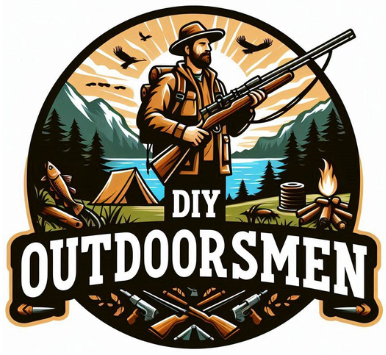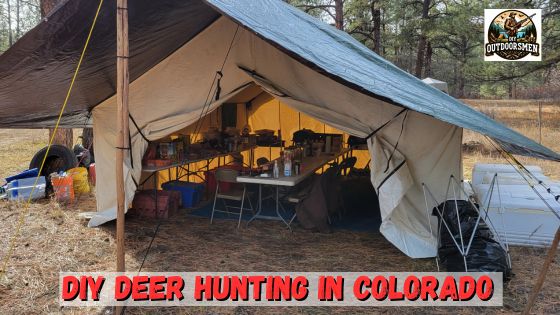Contents
With over 23 million acres of public land, Colorado is an outdoorsman’s paradise for DIY deer hunting. This is where hunters without a guide can venture into the wilderness to hunt their game in a way that’s both challenging and economical.
Public lands present a cost-effective option that appeals to hunters who relish the self-sufficiency of tracking, stalking, and harvesting deer on their own terms without breaking the bank. We’ve been hunting Colorado and New Mexico since 1997.
Sometimes guided, sometimes semi-guided, but since 2002 all our trips have been Do-it-Yourself (DIY). Colorado has been our focus for the last 20 years due to the availability of over-the-counter elk tags for some areas, or relatively easy-to-draw deer tags.
QUICK LOOK:
Colorado has over 23 million acres of public land. Within this, there are many great DIY deer hunting areas. With plentiful tags and room to roam, Colorado is a top destination for hunters and other outdoor enthusiasts. The Northwest region of the state between Rifle and Craig and north and west holds the highest deer numbers and hunter success rate. The Gunnison Basin of Colorado has long been a popular area for DIY Deer hunting. The Southwest region from Pagosa Springs to Durango is another great area with plenty of public access and a thriving deer population.
DIY hunts on public lands enable hunters to immerse themselves in the rugged beauty of Colorado while pursuing mule deer and white-tailed deer. The state’s diverse topography, from the dense forests and rolling hills to the majestic mountain ranges, provides a backdrop for a hunt that’s as scenic as it is challenging.
However, DIY hunting is not just about the thrill of the chase; it’s also rooted in the commitment to conservation and adherence to local hunting regulations. Acting responsibly ensures these hunting areas remain sustainable, and open to the public, for generations to come and supports the management of deer populations.
Colorado Public Lands for DIY Deer Hunting
The State of Colorado is 43 percent public land, which ranks at number 10 in the U.S. The top three states in terms of percentage of public land are Alaska – 95.8 percent, Nevada – 87.8 percent, and Utah – 75.2 percent.
Colorado’s public lands are managed through a mix of federal and state agencies, each with its own set of rules hunters must follow. It’s critical to understand these regulations before heading out. Armed with this knowledge, hunters can confidently pursue deer in areas recognized for high success rates and abundant game. Check with the Colorado Parks and Wildlife Department for the latest rules, regulations, and public land access.
When it comes to DIY deer hunting in Colorado, you can explore various types of public lands. Everything from Federal lands like National Forests, BLM (Bureau of Land Management), and Wildlife Refuges, to State lands and wildlife areas.
- National Forests & Grasslands: In Colorado, National Forests make up more than 13 million acres of public land acreage and are home to some of the most breathtaking landscapes in the Rocky Mountain region. These are operated by the U.S. Forest Service and tend to have excellent habitat for a variety of game species including whitetail and mule deer.
- Wildlife Refuges: Managed by the U.S. Fish and Wildlife Service, these areas provide important habitat for wildlife. Some allow hunting, so check specific refuge regulations.
- Bureau of Land Management (BLM) Lands: In Colorado, the Bureau of Land Management (BLM) is responsible for 8.3 million acres of public land. BLM lands cover vast areas and offer diverse hunting opportunities. They’re open year-round for public use, but some may charge entry fees or facility fees like camping.
- Designated Wilderness Areas: These pristine lands are protected and managed by federal agencies. While hunting is allowed in some, regulations vary, so always verify.
- State Wildlife Areas: Colorado’s state-owned lands provide additional hunting opportunities. Colorado has 350 State Wildlife Areas, covering more than 684,000 acres. With a valid fishing or hunting license you can access the properties for recreation, including hunting, fishing, hiking, and wildlife observation.
Remember to check specific rules, seasons, and tags for each area. And, remember, in Colorado, it is your responsibility to know where you are. Private landowners are not obligated to post or fence their property.
If you end up on private property, even if not posted, you can be charged with trespassing. Apps like OnX Hunt that include land ownership information can help keep you out of trouble.
Criteria for Selecting Top Deer Hunting Areas
Success in public land DIY deer hunting requires thoughtful consideration of several factors. Scouting both in the field, and E-Scouting online can help you narrow down your choices to those with the greatest opportunity for success.
One of the fundamentals is understanding deer population density. Regions where deer management practices promote healthy populations often result in more sightings and harvest opportunities. But it’s not solely about the numbers; the age structure and sex ratio of the deer are vital indicators of the herd’s overall health and hunting potential.
The Colorado Parks and Wildlife Department provides excellent information on deer numbers and sex ratios throughout the different regions of the state. They also have an excellent mapping resource, Colorado Hunting Atlas, where you can not only get an overview of the topography of a given area but also overlay game species information like wintering areas, migration routes, and more.
I examine the landscape carefully because geography and terrain significantly influence my hunting strategy. Deer are an “edge” species meaning they like areas with mixed cover and open areas. When scouting you want to look for areas with a mix of open meadows, rugged hills, and dense woods that offer diverse environments for deer to feed, hide, and roam.
Meanwhile, topographical features can either contribute to the challenge or make hunting more manageable. Hunters need to evaluate how different terrains will affect their approach, considering factors like visibility, wind patterns, and physical exertion. Remember, not only do you have to get in there, but you have to be able to get a deer out. 😉
Lastly, think about accessibility and amenities. Roads and trails that make hunting areas reachable are crucial, especially when you’re planning a DIY hunt. I look for regions with nearby camping grounds or campsites, parking spaces at the trailhead, and wilderness access.
Great Colorado DIY Deer Hunting Information Sources:
- Colorado Parks and Wildlife – Source for information, rules, and regulations on hunting in Colorado. Everything from hunt dates, hunting units, public access, and game population data.
- Colorado Hunting Atlas – Excellent mapping tool with satellite and topo maps as well as game species concentrations and migration routes.
- Colorado Hunt Planner – Call 303-291-7526 to talk with a Hunt Planner. Get help planning a Colorado hunt from the Colorado Parks and Wildlife personnel with firsthand knowledge of the areas.
- Huntin’ Fool – A subscription service that includes a monthly magazine plus detailed information and hunting statistics for each western state in the US. Access to professional hunt advisors with experience in the area.
- OnX Hunt – Mapping App for your smart devices that not only provides detailed maps, but also GPS, and includes land ownership information to keep you on public land and avoid trespassing.
- GoHunt – Industry-leading research tools to help you find the perfect unit for whatever species, state, or season you’re looking to hunt
The Premier DIY Deer Hunting Zones of Northwest Colorado
Deer numbers fluctuate from area to area as a result of many factors including weather, hunting pressure, and urban development. Always check with the Colorado Parks and Wildlife Department for the latest population data for the areas you are interested in.
That being said, however, the Northwest Colorado region is renowned for its robust deer population and offers some of the finest public land hunting opportunities. When you think of this area, the White River National Forest is often the starting point for many hunters.
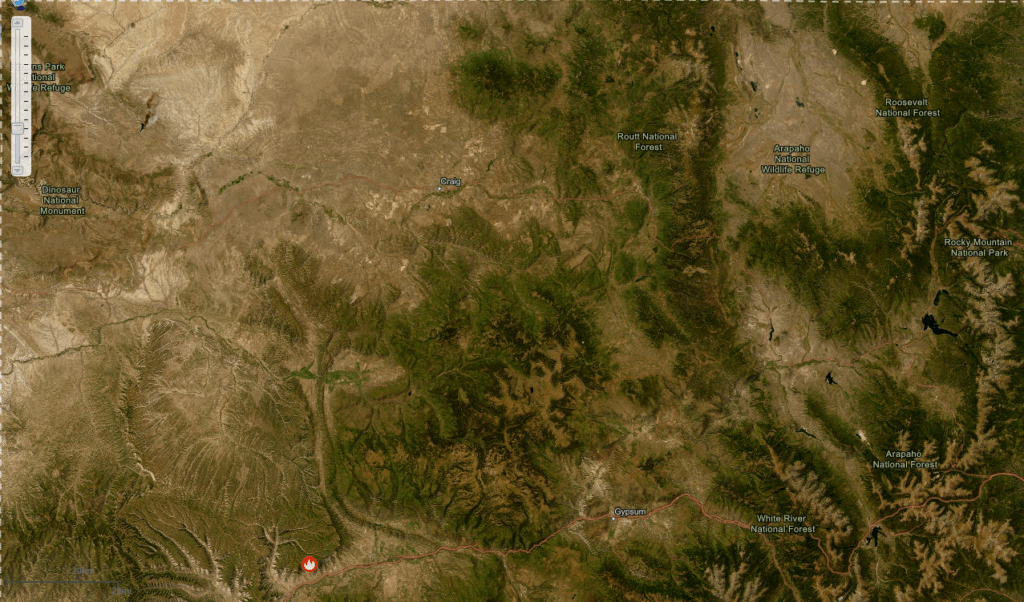
This area boasts diverse habitats ranging from expansive aspen groves to dark timber forests, providing excellent cover and forage for deer. There was a severe winter kill in the area in 2022 so deer numbers are currently down. But, there are still some quality deer left, I have seen them firsthand.
Within the White River National Forest, lies the Flat Tops Wilderness Area. Hunters willing and able to hike more rugged terrain will find excellent deer hunting and fewer hunters here. It’s worth noting, though, that this area’s size and topography demand good physical condition and navigation skills.
Seasoned and physically fit hunters will appreciate the challenge it presents. If you have access to horses this is a great area to pack in and spend deer season. As a wilderness area access is limited to horses, bicycles, or hiking in.
A bit further north is the hunting ground near Craig, often referred to as the ‘Elk Hunting Capital’. While elk may be the headliners, mule deer also thrive in the region’s sagebrush and oak brush hills.
Public lands here are vast, and knowing the lay of the land is a huge advantage. Topographical maps and recent satellite imagery are invaluable in planning your hunt in these areas. Keep in mind much of the lower-elevation country is private land.
Southwest Colorado is an Underrated DIY Deer Hunting Locale
Southwest Colorado’s rugged terrain is often overlooked for deer hunting, yet it hides some of the best spots for a DIY deer hunting adventure. The difficulty of the terrain often means fewer hunters and more untouched environments, which can work in a skilled hunter’s favor. This is where our group has been hunting for much of the last 20 years.
The San Juan National Forest covers 1.8 million acres of diverse ecosystems. Within this vast area, hunters can find pockets where deer populations flourish. The key to success here is understanding the pattern of deer within the different elevations and forest types across the seasons. The Colorado Hunting Atlas can be a valuable resource for this information.
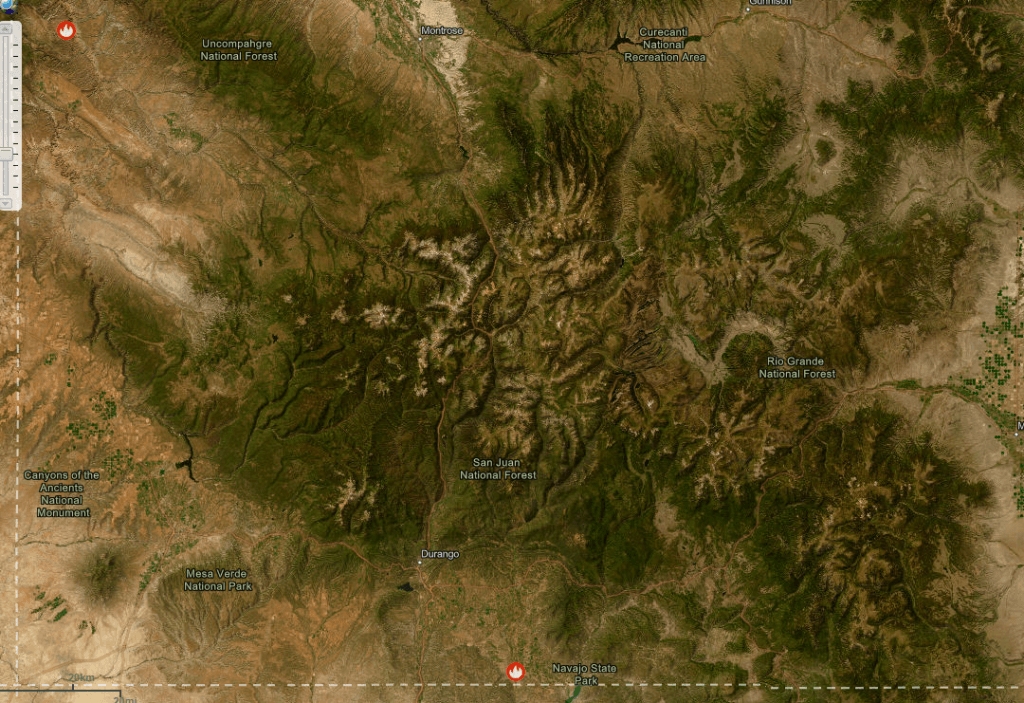
The Uncompahgre Wilderness Area encompasses over 100,000 acres of the San Juan Mountains. It’s challenging to access and navigate, thus providing a sanctuary for large deer. To be successful here, deer hunters should be prepared for steep and varied terrain, which often requires good physical condition and hiking capabilities.
For those willing to put in the work, there are tactics to increase the odds of a successful hunt in these remote areas. Using topographical maps and satellite imagery to scout for potential hot spots and migration corridors is a good start. Hunters should also consider setting up trail cameras where legally permitted to monitor deer activity before the season begins.
Southwest Colorado has a good deer population and some real wall hangers. There is plenty of public land, but there is also an intermix of private land so be aware of your location at all times. Finding more remote areas will give you the best chance of finding deer and avoiding most of the other hunters.
There are many good DIY Deer Hunting areas in Colorado. These are just two of the better areas and the two that I am personally most familiar with. The Gunnison Basin near the town of Gunnison Colorado has long been a popular destination for DIY deer hunting.
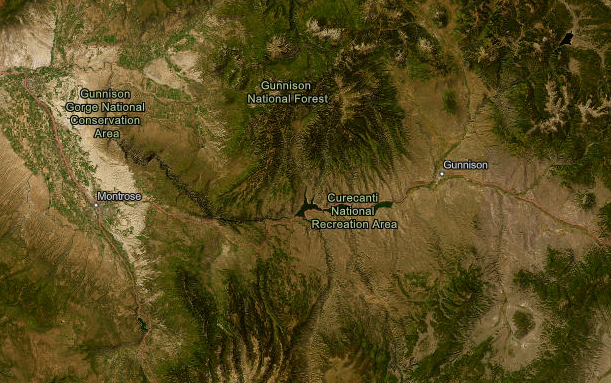
Check the resources at the Colorado Parks and Wildlife for the most current information on deer numbers and hunter success rates.
Start Planning and Preparing for Your DIY Deer Hunting Adventure
Your successful Colorado public land deer hunt hinges on thorough planning and preparation. It isn’t just about picking a spot on the map; it’s about preparing for what the landscape and the elements might throw your way.
Begin by gathering your gear. Steer clear of the unnecessary and focus on quality essentials like a sturdy and comfortable pair of boots, reliable navigation tools, and a good layering system to handle Colorado’s unpredictable weather.
Next, educate yourself on deer behavior, particularly how the seasons affect their movement. Understanding where deer feed, rest, and migrate will increase your chances of a successful hunt.
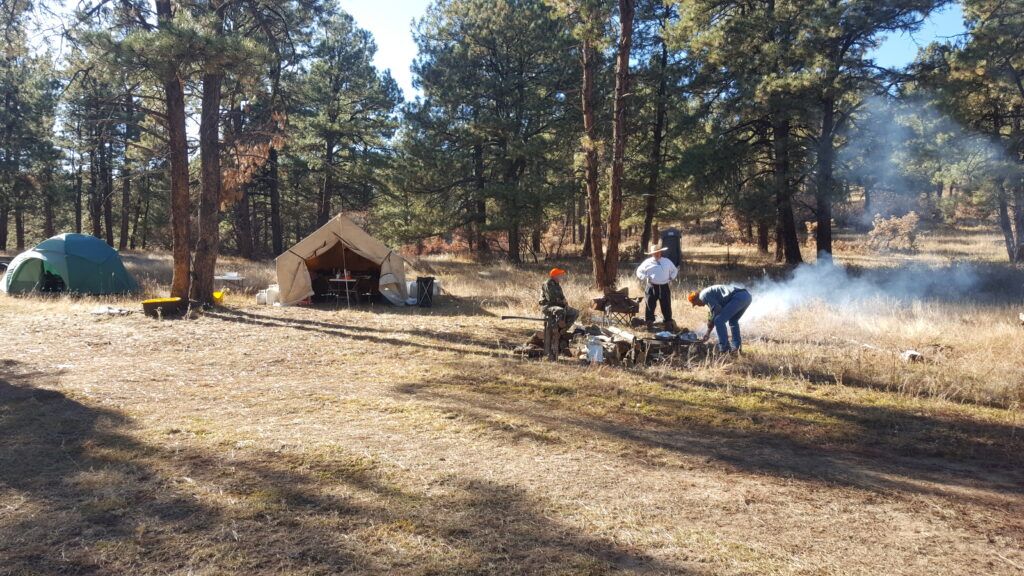
Obtaining the right licenses and tags is one of the first orders of business when planning your hunt. Visit Colorado Parks & Wildlife’s website for the latest information on licenses, tags, and hunting seasons to ensure you’re on the right side of the law.
Lastly, prioritize safety. Tell someone your plan, hunt with a buddy when possible, and consider a hunter safety course if it’s your first time. Remember, the most memorable hunts are those that end with you safely returning home, hopefully with a deer, but always with a story and great memories of time spent with friends and family in the outdoors.
As always, stay safe, enjoy the journey and please try to leave it cleaner than you found it. If you have any comments, questions, ideas, or suggestions please leave them in the comment section below and I’ll get back to you ASAP. You can follow us on YouTube: Man Art Creations.
P.S. – Thanks so much for checking out our blog we really appreciate it. Just so you know, we may receive a commission if you click on some of the links that appear on our site. This helps us keep our content free and up-to-date for everyone. We appreciate your support!
